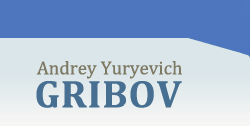
| HOME |

|
ABOUT THE AUTHOR |

|
|

|
WHERE TO BUY |


Purpose of the workThe aim of this study is to deduct and demonstrate current definitions
(which are essential for the normal functioning of a country’s
financial system) of a security, money, currency and, most importantly,
of the rules of circulation for different forms of money and
securities.
Definition of a security A security is a document that has been completed in the prescribed manner and in accordance with compulsory requirements, and which secures a sum total of property rights and non-property rights that are subject to certification, concession and unconditional realisation as prescribed by federal law, and which may be alienated by the rightpossessing side to any party, regardless of the wishes of the legally bound side. In some cases, for example, with acceptance of a promissory note, the legally bound side can change without the agreement of the rightpossessing side. With the alienation of a security, all rights (obligations) secured by it transfer in the aggregate. A security has an obligatory nature regardless of which bearer it is filled in for. A security of which the owner’s rights are secured in a special register (ordinary or computerised) is a registered security. In a case provided for by law or in accordance with it, for the realisation or alienation of rights certified by a security, evidence of these rights, which is kept in a special register, is sufficient. A security for which the right-possessing side is the owner of its bearer is called a bearer security. A bearer security is completed in a single copy. Rules for circulation of securities Securities, with the exception of bearer securities, are treated in accordance with liability laws. Bearer securities are treated in accordance with laws of estate, but they are issued and redeemed in accordance with liability laws. Definition of money
Various property goods can be used as money — objects, liabilities and entity-liability combinations, which fulfil the following functions of money:
Definition of currency
Currency — liabilities, stipulated for circulation, of a State bank (treasury, reserve system) — State cash or non-cash money — is defined as bearer securities issued by the State without a time-limit for presentation in the bearer’s name with an endorsement, which must be accepted in all regions of a country in accordance with the norms of its public law. Rules for circulation of different forms of money
The rules of circulation of different forms of money are defined by the rules of circulation for those material goods that fulfil the functions of money. According to the circulation rules, all forms of money can be divided into three broad categories: entities, liabilities and derivative securities (derivatives).
1 registered securities in cash form: à) registered bills; b) registered bonds, promissory notes of banks, and other quasimoney; c) nominal shares and other stock valuables; 2 nominal accounts in non-cash form: à) non-cash currency (deposit money, cheque accounts); b) any business-type accounts, which reflect:
In this study, use has been made of detailed quotes from Russian and
foreign researchers into the legal and economic nature of money, in
order to deduct and demonstrate these definitions and rules.
|
Copying information from this website is only allowed under condition of referring to this web link.
Copyright © 2008 Andrey Gribov
All rights reserved